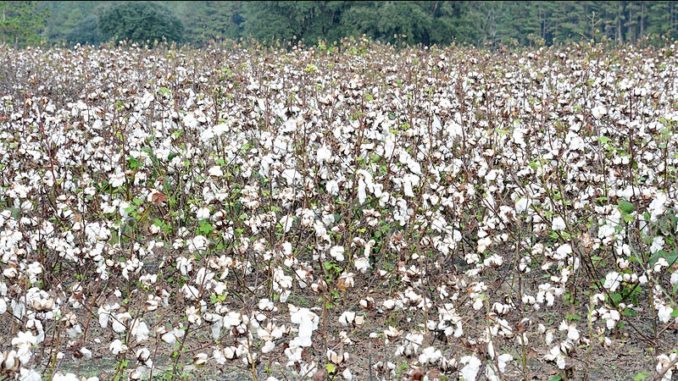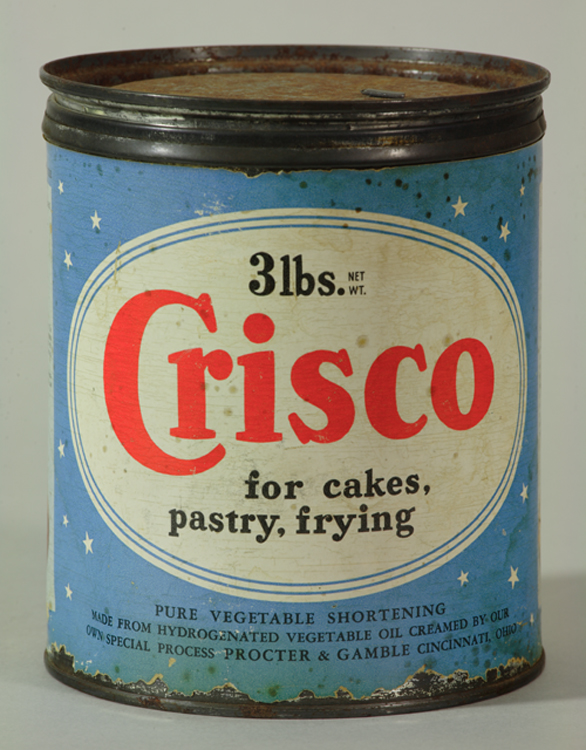
Cottonseed is a byproduct of cotton harvesting. Cotton was big business in the United States in the nineteenth century thanks to Eli Whitney’s cotton gin. The machine combed raw cotton, quickly and efficiently removing the seeds which previously had to be removed by manual labor.
For centuries, if not millenia, the seeds of many plants such as almond trees, cotton, flax, poppy, safflower, and sesame, had been milled and pressed into oil for various uses including in foods and food preparation. Even cottonseed oil had its uses, but not in cooking. The oil produced from cotton seeds smelled bad, and looked like what we might think today could be used motor oil.
The tons of cotton seeds left behind by Whitney’s cotton gin far exceeded their usefulness. As the market for cottonseed oil for industrial and commercial uses was limited, cotton seeds were mostly left in huge piles to rot.
Around 1899, David Wesson, a chemist with an interest in fats and oils, found a way to make cottonseed oil edible. After processing, the oil was a more-or-less odorless, tasteless, clear liquid. It was also inexpensive compared to lard, and became a popular cooking oil widely available to consumers by 1901.
Lard had been used for ages in food preparation. It was a byproduct of pork processing (read: pig slaughtering) and food prepared with lard tended to have a bit of a pork flavor (including baked goods like pie and cake). No one minded the taste since countless generations had grown up eating food prepared with lard. One strength of lard was its ready availability, another was its shelf life. Lard could be stored, unrefrigerated, indefinitely.
Wesson’s new oil was the beginning of the end for lard. Other companies used Wesson’s process to make their own products. Some created a shortening for cooking and baking by mixing it with animal fat to make a less expensive lard. Most of these companies employed marketing that touted the key ingredient, cottonseed oil, while painting lard as unhealthy, unsanitary, and the pork processing industry as inhumane. The lard industry fought back with negative ad campaigns of their own, reinforcing the poor impressions people already had about cottonseed oil. The negative marketing was very effective. In a short few years, the public held a dim view of both lard and processed cottonseed oil. Another company soon joined the battle, but with a superior marketing plan.
For the Procter & Gamble Company, cottonseed oil was both a problem and a solution. Their main business was the manufacture of soap and candles. They also operated cottonseed oil mills to supply their factories with the raw ingredient. Competition from the electric light bulb had been cutting into their candle profits in a big way, i.e., candle sales were way down, leaving them with more cottonseed oil production capacity than they could use.
A chemist named Edwin C. Kayser came to Procter & Gamble with a new product: hydrogenated cottonseed oil. It looked like lard and had a two year shelf life, but it lacked the pork taste and had a high smoking temperature when used for frying (which was an advantage over olive oil).
The company recognized a solution to their problems when they saw it, and they were not going to squander the opportunity with poor marketing. Instead of associating their new product with cottonseed oil or even cotton as other companies had done, Procter & Gamble went the opposite direction, with the slogan, “Crisco is Crisco, and nothing else”, and stating, “100% shortening”, in its advertising. The closest they came to naming the real ingredient was to call it vegetable oil. They avoided any mention of or association with cottonseed oil.
Crisco was introduced in 1911, the name being a marketing invention shortened from the phrase, “Crystallized Cottonseed Oil”.

The boll weevil virtually destroyed the cotton industry by the 1920s, which meant a shortage of cottonseed oil – eventually forcing Procter & Gamble to replace Crisco’s original ingredient with a mix of canola oil, palm oil, and soy oil. Today, Crisco is a product of the The J.M. Smucker Company, which acquired the brand in 2002.

1 Trackback / Pingback
Comments are closed.